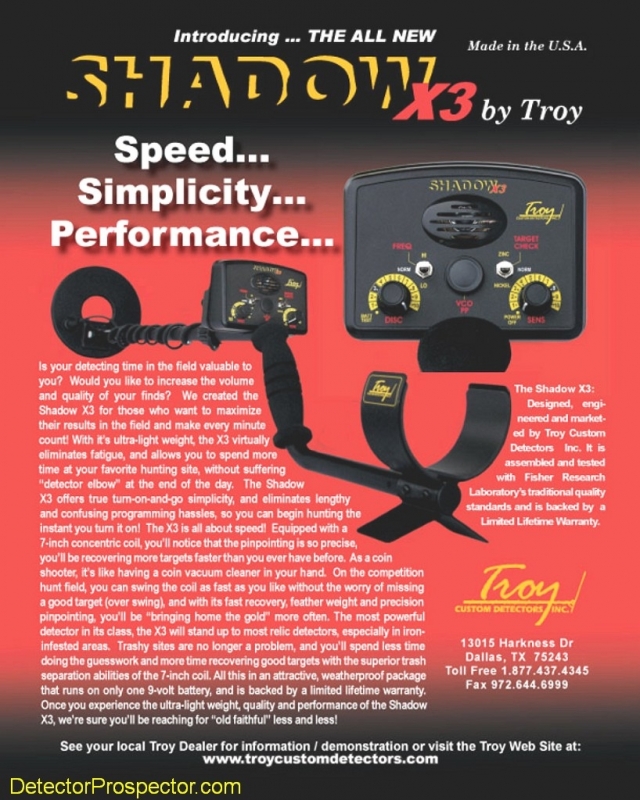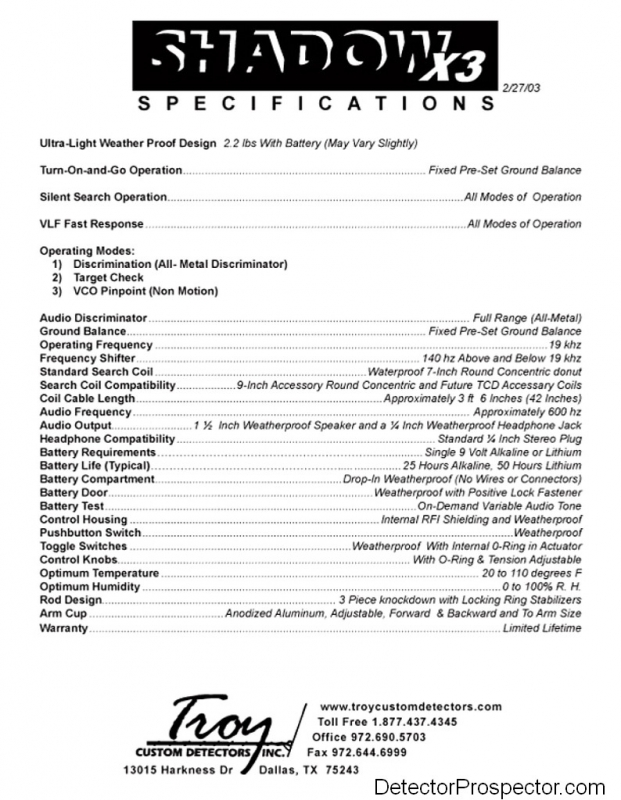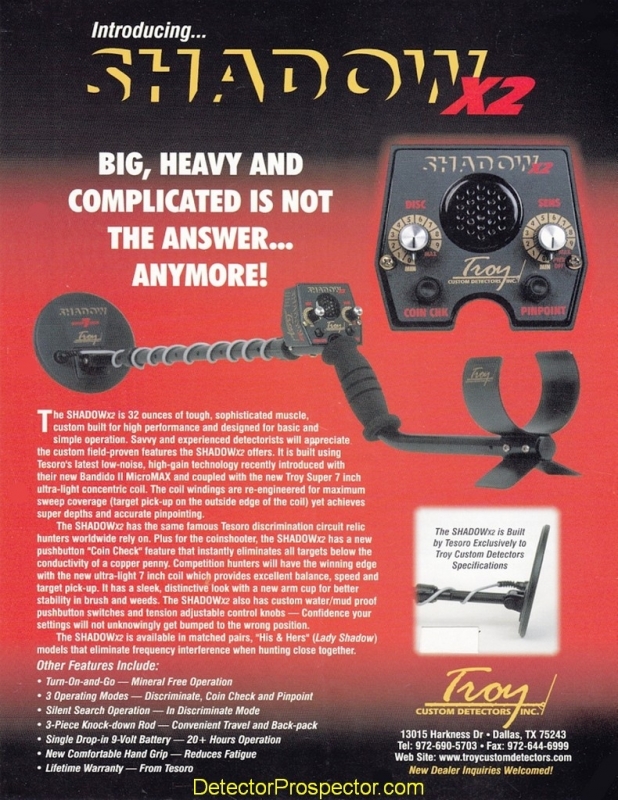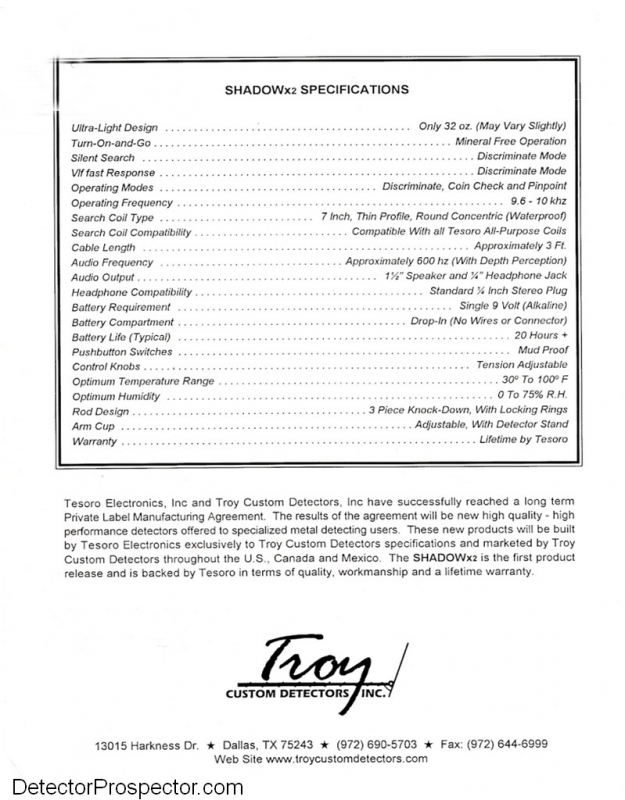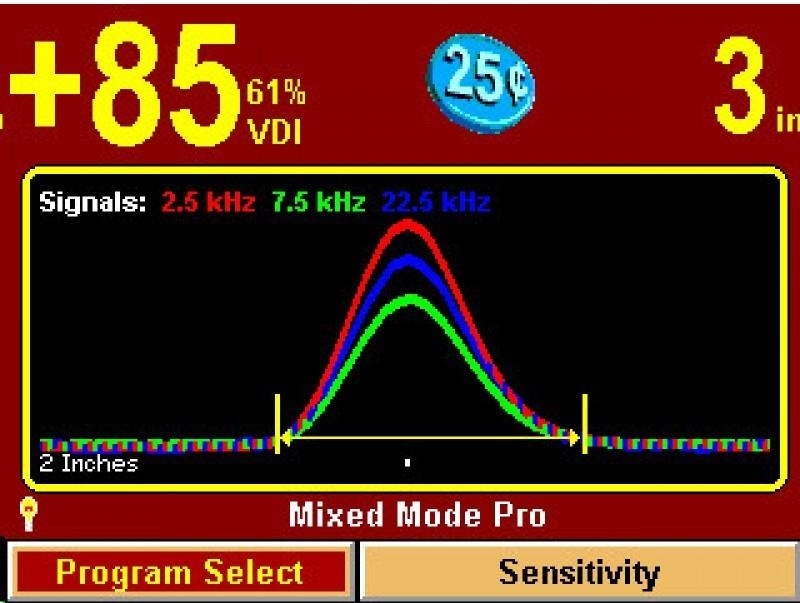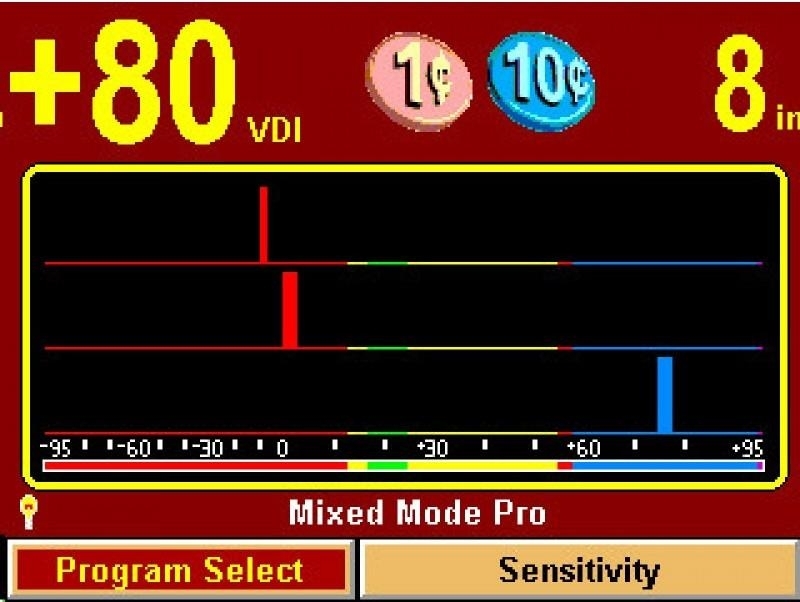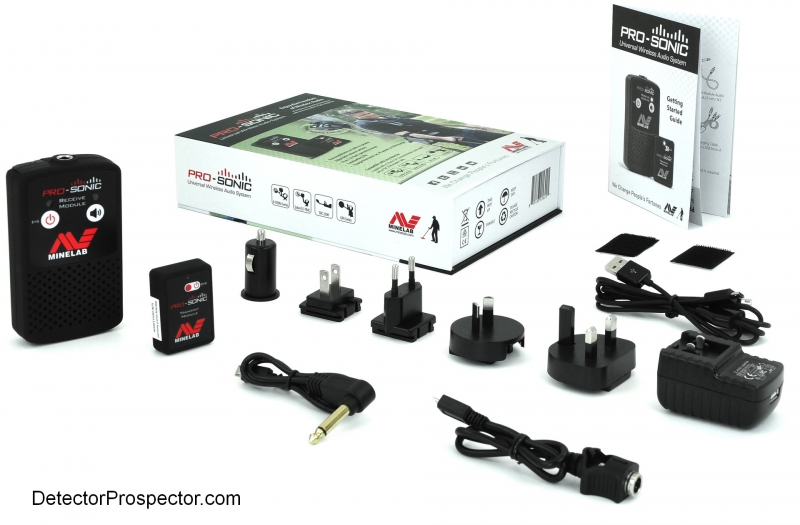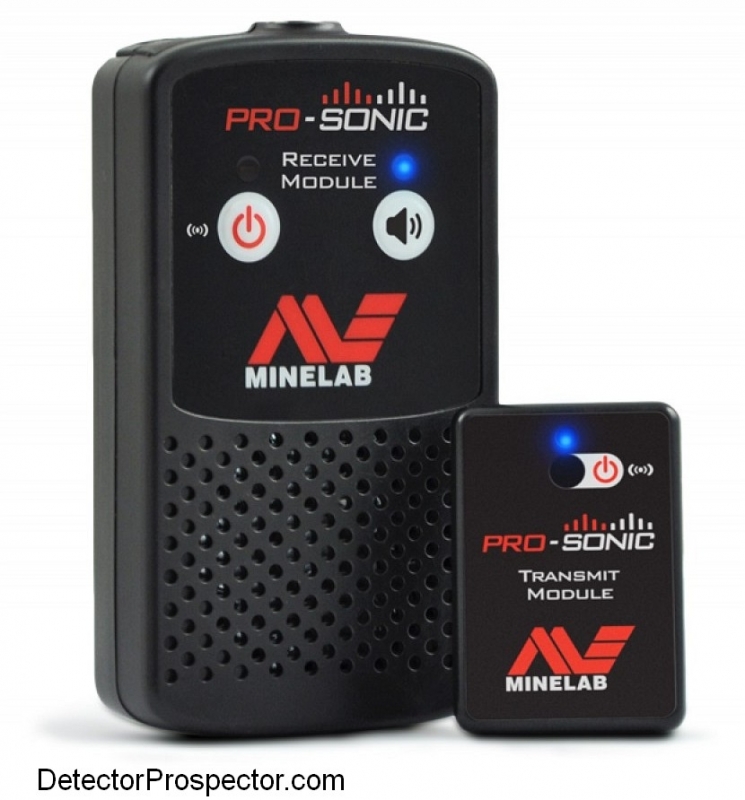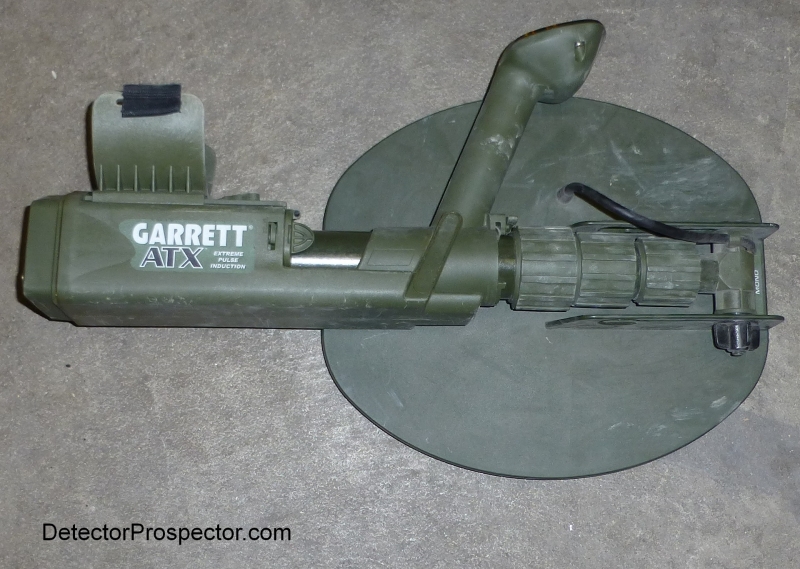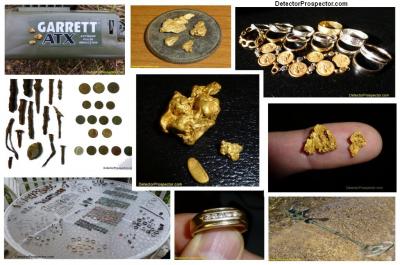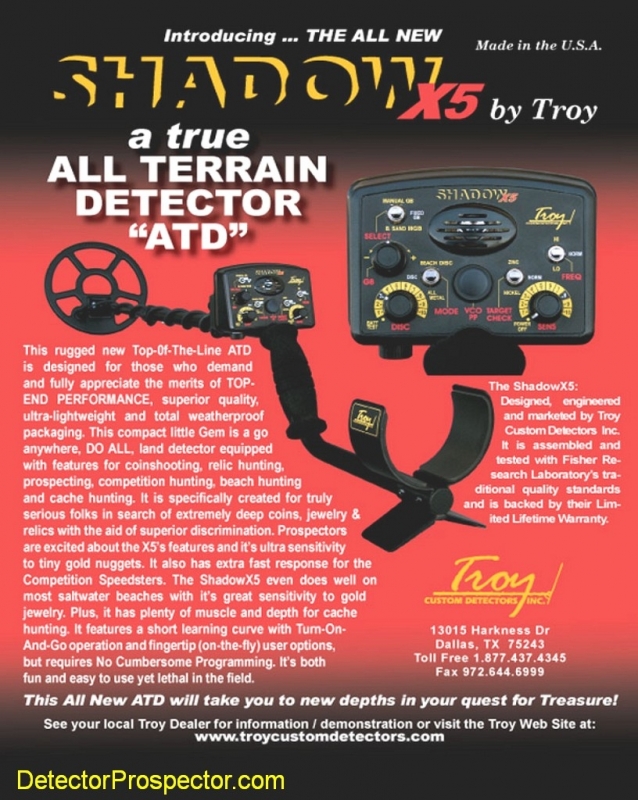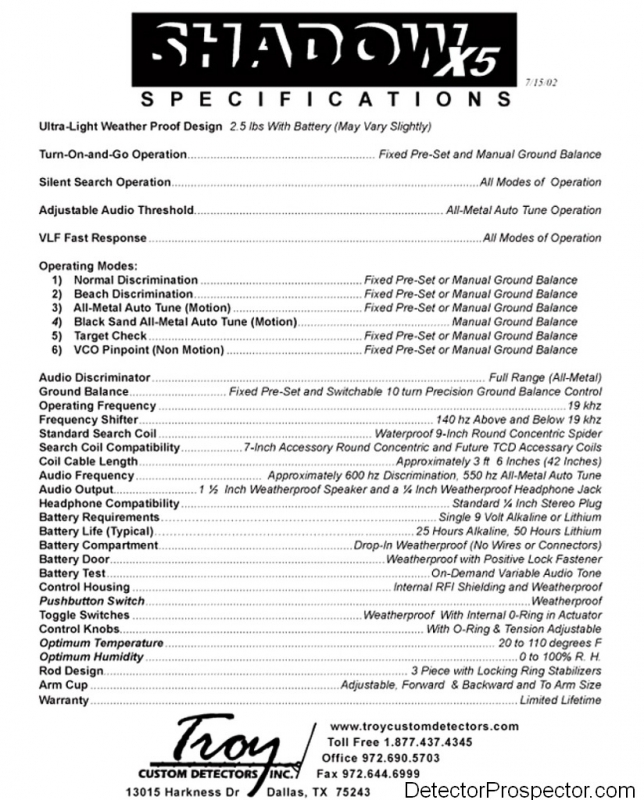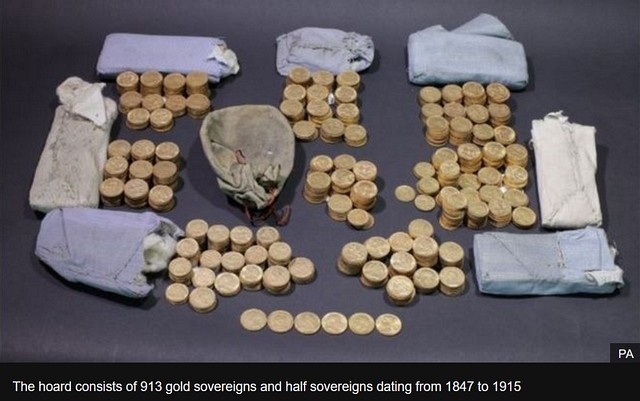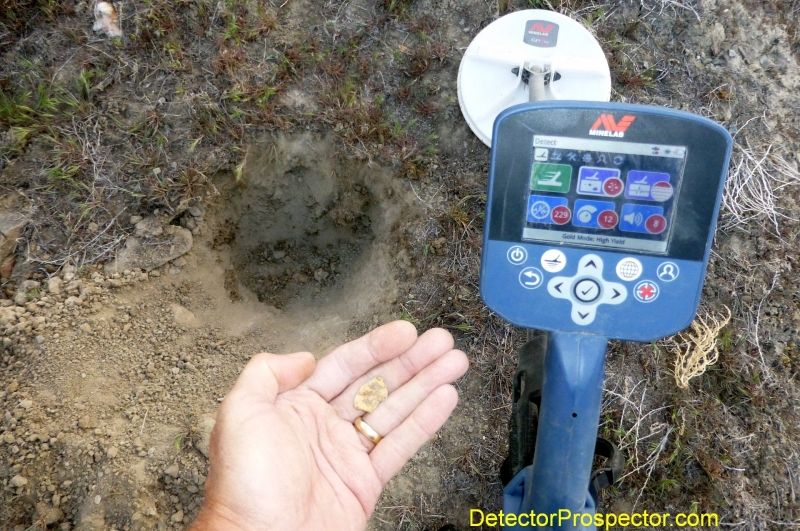-
Posts
19,815 -
Joined
Content Type
Forums
Detector Prospector Home
Detector Database
Downloads
Everything posted by Steve Herschbach
-
Everyone needs to watch this video. We talk all the time how lower frequencies ignore ground better and penetrate deeper on larger targets, but how high frequencies are better at getting small targets to respond. This video does a superb job of illustrating how high frequencies do a better job at "lighting up" a small gold target. The key is we are using one detector and coil with all the settings just the same - the only thing that changes is the frequency. This eliminates other extraneous factors that usually play into comparisons of this sort. What this video does not show is how higher frequencies not only "light up" the target but also mineralized ground, creating difficulty with penetrating deeply in that ground. One of the great lessons in metal detecting is that there is no free lunch, and very often improving one thing comes at a cost somewhere else. You can skip right to "the good part" at 2:45
-

New Detech Chaser Metal Detector
Steve Herschbach replied to argyle's topic in Metal Detector Advice & Comparisons
There appears to be only one DeTech Chaser model at this time, the 14 kHz version. Detech USA 114 McGrogan Rd Ruffs Dale PA 15679 Phone Line 1: (724)-446-9433: Phone Line 2: (724)-989-0341: Hours: Monday - Friday 8am - 5pm EST Email http://www.detechusa.com/contact-us/ -

Troy X5 Review By Steve Herschbach
Steve Herschbach replied to Mark Gillespie's topic in Metal Detector Advice & Comparisons
-

Troy X5 Review By Steve Herschbach
Steve Herschbach replied to Mark Gillespie's topic in Metal Detector Advice & Comparisons
The X2 was made by Tesoro and the X3 and X5 were made by Fisher (see X5 brochure above). They all in theory carry a Limited Lifetime Warranty to the original owners through Tesoro and Fisher respectively, but realistically that may be getting difficult due to unavailability of older parts. Click on images for larger versions. -
One last point before I move on to other subjects. The use of advanced geophysical devices is not as simple as people like to imagine. Ground penetrating radar for example. People imagine a screen with a pretty picture of the target. Reality is a small color squiggle or squiggles in the middle of lots of other squiggles. These devices results are highly interpretive and require trained, skilled operators. Please examine this document carefully because the included illustrations are highly informative. A REFERENCE FOR GEOPHYSICAL TECHNIQUES AND APPLICATIONS
-
An extremely large iron meteorite might be discovered with a low flying helicopter employing airborne magnetometers. I am guessing the meteorite would have the size of a small car or larger. Since the largest known intact meteorite is 2.7×2.7×0.9 metres (8.9×8.9×3.0 ft) the odds here are pretty low. Probably as good as my finding that one gallon sized gold nugget. This would be similar to Marine Magnetometer Surveys and would have similar parameters. Magnetometers do not work on non-ferrous metals like gold. The Hoba Meteorite
-
The irony in your post Jason is what you are saying sounds just like what purveyors of LRL instruments say. "the idea of long distance detection is not beyond the realm of scientific reality". The only difference is they claim to have discovered solutions to the issues you discuss, but cannot reveal how exactly in order to protect their proprietary methodology. After all, Fisher is not about to release the source code for the F75, are they? The key is pure common sense. This forum is a good example of a gathering place of successful prospectors from all over the world. As a whole the prospectors of the world try every single method available in a quest to succeed. One need merely examine the many forum posts over the years to find out who the successful prospectors are and what kind of devices they are using. It really is no more complicated than that.
-
Obviously a good person exists under your gruff exterior! Well done!!
-
You hit the nail on the head Norm. Long Range Locators or LRL tends to refer to a certain class of "belief based" treasure hunting device. Yet as Chris notes there are many "science based" devices that work at greater distances than are the norm in the hand held metal detectors that we usually discuss here on the forum. These fall under a class I refer to as "geophysical prospecting devices" used in exploration geophysics. From Wikipedia: "Exploration geophysics is an applied branch of geophysics, which uses physical methods, such as seismic, gravitational, magnetic, electrical and electromagnetic at the surface of the Earth to measure the physical properties of the subsurface, along with the anomalies in those properties." This 1995 paper from the U.S.G.S. briefly summaries the state of the art in table form with range to target in the column on the right. Click on image for larger version. The classic problem is the same as what we face with hand held metal detectors. Small items can only be detected at relatively short distances, and larger items at greater distances. For example, a small gold nugget weighing under a gram might be detectable at one centimeter, whereas a gold nugget weighing several kilograms might be detected at one meter. In order to achieve detection depths exceeding a meter, the target has to be extremely large, so large that no single mass of gold exists that could be detected at that range. In the realm of science based treasure hunting devices two well proven detectors are the Fisher Gemini 3 and White's TM808. The TM808 chart does a good job of showing how large items have to be to be detected at realistically achievable depths using existing technology: If you are looking for a gold nugget the size of a compact car, it might be detected at 20 feet / 6 meters. I think we can all agree that is unlikely. Nuggets the size of a one gallon can do exist, and these might be detected as deep as 1.7 meters depending on their shape and orientation in the ground. This would be possible with devices such as the Minelab GPX 5000 with a very large coil or even the TM808 in milder ground conditions. Geophysical prospecting methods rely on the targets being far larger than any single gold nugget. A typical target might be a mineralized zone in the earth a kilometer in diameter. This makes geophysical prospecting devices other than standard metal detectors as discussed on this forum inapplicable for use when looking for items smaller than a one gallon can. People often mention ground radar, and the same issue exists. The distance to target or target resolution is tied to the size of the item sought, and the greater the range you wish to detect it, the larger the target must be. That is the science of it as we currently know it, and devices that claim to exceed this limitation are stepping outside the realm of known science at this time. My advice to everyone always is stick with known provable scientific methods and avoid items sold using pseudoscientific marketing. Geotech LRL Resource Gold From Water (and Other Mining Scams) Nevada Bureau of Mines and Geology Special Publication #22 HANDBOOK OF GEOPHYSICAL PROSPECTING METHODS FOR THE ALASKAN PROSPECTOR A REFERENCE FOR GEOPHYSICAL TECHNIQUES AND APPLICATIONS
-
To each their own. I promise you these two guys know their stuff when it comes to detecting. I personally normally hunt slower than that. But when in organized hunts with a dozen other guys chasing gold I have hunted that fast or faster! Same with overlap. If I am trying to cover a spot thoroughly I hunt slow, methodical, and overlap. But when exploring I just wander at will following my nose where it leads me. They might have slowed it up for the video but on the other hand nobody was likely to tell these guys how to detect. More about Gordon Heritage More about Mark Williams
-

New Detech Chaser Metal Detector
Steve Herschbach replied to argyle's topic in Metal Detector Advice & Comparisons
The DeTech Chaser is finally available for sale in the U.S. http://www.detechusa.com/product/detech-chaser-vlf-metal-detector/ -

Garrett ATX 11x13 DD Or 11x13 Mono Or 10x12 DD
Steve Herschbach replied to Jalance's topic in Garrett Metal Detectors
The main thing a GPX offers is a wealth of coil options. When you multiply the performance edge by using the appropriate coils for the task at hand the advantages become compelling. For just a week however I really can't make the case for that all mattering much. Beach and water detecting is actually my favorite use of the ATX and if a beach is where you are more likely to be most of the time that sure weighs heavily in the favor of the ATX. For in water use though you really have to go epoxy filled 10" x 12" DD - those enclosed coils probably float like a cork! See what your friends think. -

Garrett ATX 11x13 DD Or 11x13 Mono Or 10x12 DD
Steve Herschbach replied to Jalance's topic in Garrett Metal Detectors
For prospecting the enclosed center mount coil swings better and is less prone to hanging up on sticks and rocks, and has improved knock resistance. I choose DD because in my opinion the ATX was designed for and is optimized for use with DD coils. You will get better ground canceling performance with the DD that basically negates the theoretical advantages of the mono coil on all but the largest targets. Plus better small gold sensitivity and the ability to use the ferrous discrimination if desired. The iron discrimination will not work with a mono coil. I do like how the ATX folds up! -

Garrett ATX 11x13 DD Or 11x13 Mono Or 10x12 DD
Steve Herschbach replied to Jalance's topic in Garrett Metal Detectors
I guess the main question is - do you need the extra weight required of a waterproof detector? The ATX is slightly lighter at 6.9 lbs versus 7.3 lbs but for all practical purposes about the same weight as a GPZ. Swings about the same if you add padding to the hard hand grip. For long hours you will want bungee support. Back when Minelab's were twice the price the ATX was a no brainer in my book but now you can get a GPX 4500 for near the same price as an ATX. For me personally I actually did want waterproof and so I sold my GPX 5000 and kept the ATX. But that is because I use the ATX for all sorts of stuff more than just prospecting, like in water detecting. Much as I bitch about the weight of the ATX it has been one of my favorite PI detectors due to its versatility. -

Garrett ATX 11x13 DD Or 11x13 Mono Or 10x12 DD
Steve Herschbach replied to Jalance's topic in Garrett Metal Detectors
If it was me buying a brand new ATX for gold prospecting personally it would be with the new closed 11 x 13 DD. -

Troy X5 Review By Steve Herschbach
Steve Herschbach replied to Mark Gillespie's topic in Metal Detector Advice & Comparisons
Blast from the past! The original review still resides at https://www.detectorprospector.com/magazine/steves-mining-journal/troy-shadow-x5-crow-creek-gold/ The Troy X5 is another result of Dave Johnson getting involved in the design of a detector. Super hot 19 kHz machine with surprisingly good performance on silver for the frequency. It was manufactured by Fisher to Troy's specifications which included top notch components and tight tolerances. Supposedly around 3000 made. Another nostalgia type machine, kind of a "Super Tesoro" in design concept. Very hot on gold but it had issues with handling hot rocks. A direct predecessor of the Gold Bug Pro. And frankly just another example of how "max depth" really has not improved in decades. Troy Shadow X5 Field Test Troy X5 Instruction Manual -

How To Make Yourself Crazy!
Steve Herschbach replied to Steve Herschbach's topic in Metal Detector Advice & Comparisons
Thanks David, you are too kind. I consider myself blessed to have at least has some input on a few detectors over the years. Nothing major but over almost 40 years of nudging and pushing and yes, by posting on the internet, I have had at least a tiny part in the direction of things. All quite selfish really. I just want to get that "perfect metal detector" I have been after all these years!- 20 replies
-
- nokta impact
- xp deus
-
(and 1 more)
Tagged with:
-
"The largest hoard of gold sovereigns in Britain, found hidden in an old piano, has been declared treasure. The discovery was made in Shropshire before Christmas when the piano's new owners had it retuned and repaired. Shrewsbury Coroner's Court decided the find qualified as treasure, which means ownership now lies with the Crown. It will be offered for sale to museums. The tuner who found the hoard and Bishops Castle Community College, which owns the piano, will share a reward." Complete story and photos here
-

How To Make Yourself Crazy!
Steve Herschbach replied to Steve Herschbach's topic in Metal Detector Advice & Comparisons
Thanks everyone. Just me randomly blah, blah, blahing so hopefully some useful tidbits in there someplace. My wife says I love to pontificate and I guess I do own the soapbox! I prefer to use PI detectors or the GPZ, which is a hybrid, for my actual metal detecting. Playing around with VLF detectors is just something I enjoy doing in and of itself for educational purposes. I am building up to a great weeding out of VLF detectors this coming winter as I essentially just give up on the technology as a whole and put it to bed. Not that I won't use VLF detectors, just that I am growing to accept that the best of what we have is the best of what we are going to get without new patent numbers. My main goal now is to see how few machines can give me the most combined functionality. What I really want is a detector that can 1. run at a low to moderate frequency for all around coin, jewelry, and relic detecting 2. run at a very high frequency (30 khz or higher) for tiny object hots and 3. run in a multi frequency mode to handle saltwater beaches. Waterproof and built in wireless, light in weight. Give me that, and I would be pretty well covered. In theory as close as I am able to get right now is a CTX 3030 (waterproof multifrequency) combined with a Deus V4 (4, 8, 12, 14, 18, plus 30 and 80 khz). And I have to have the DFX to run the Bigfoot. But that would get me down to three VLF detectors. White's needs to stuff a V3i in the MX Sport box with a simplified interface. Minelab a CTX with single frequency options. Or Nokta needs to make the Impact waterproof and add multifrequency. Or XP add multifrequency, etc. Fisher is way overdue. Why we did not get a CZ-3D stuffed in the F75 box ages ago is just another head scratcher for us all. Presumably what they are working on is better and will be worth the wait. For now though I am just loading up on the options and tossing them into "Darwin's Detector Selector" as operated by Steve Herschbach. Survival of the fittest. I can't ever discount that indefinable "which one is just the most fun to grab and use" factor however. The G2 is a winner there, and I am glad I finally got the G2 variant of the Gold Bug Pro as the T2/F75 handle it uses is actually my all time favorite in a hand grip. Deus is a very close second.- 20 replies
-
- nokta impact
- xp deus
-
(and 1 more)
Tagged with:
-

Wanted - Mods For TDI Metal Detector
Steve Herschbach replied to Strider55's topic in White's Metal Detectors
tboykin works at White's. You may want to PM him though he can also PM you. -
I have four miniature dachshunds - my little girls! Combined they roughly replace one human infant. I am a light sleeper, and somebody will bark. Or somebody else will want out. This happens almost every night, and often multiple times per night. So answer - no, I really do not seem to sleep sometimes. When I am waiting for one to go out and do her business or am now just up and can't fall back asleep I will check the forum. Now you know the rest of the story! "I thought the back-light would run my battery too fast." I always have the backlight on full, and my GPS is always on, and nearly always recording. I have only ever a couple times detected so long in a single day as to run short on a full charge. I charge every night. If you do so, I would not worry about the backlight being on. The screen is transflective and works best with bright reflected sunlight (at just the right angle) but the backlight helps under nearly all other conditions.
-

The Latest On The Deus V4 High Frequency Gold Coils
Steve Herschbach replied to Ringmoney's topic in XP Metal Detectors
I can tell you how the Deus high frequency coils will perform without having ever run them. At 14 kHz they will operate on par with other similar machines running a similar size coil. At 14 kHz the Deus 9" Coil will come close to duplicating what the Whites MXT can do with its 10" round DD. At higher frequencies they will come close to matching other high frequency machines. The only real question in my mind is if the Deus elliptical running at 80 KHz can match the Gold Bug 2 running its 10" elliptical at 71 kHz? My guess is the Gold Bug 2 will retain the crown since it is specifically tuned for and operates solely at 71 kHz. The Deus frequency shifting trick has so far always resulted in compromises being made at some frequency. However, if the Deus can get "close enough" to duplicating both MXT and Gold Bug 2 performance in a single detector that will be an achievement. That is the easy part actually. The second question is can the Deus ground tracking system keep up with bad Australian ground? The standard to match there will likely be the new Minelab Gold Monster. Getting good operation as a manual ground balance machine is easier, but getting a high frequency to track efficiently in bad ground while not tracking out gold nuggets is difficult. That issue is less important to me personally but will be of greater concern to Australian users. Finally, the only real reason for me to use a single frequency detector is for 1. the hots on the really tiny gold and 2. ability to discriminate ferrous material in very trashy locations. These two areas are where my GPZ 7000 suffers. However, the best report I have seen regarding the older 3.2 Deus operation in bad ground as a discriminating nugget detector left room for concern. I would assume due to the expansion of the ground balance range that this is an area XP was trying to address. How has that worked out? The thing is the Deus in each mode is operating as a single frequency detector, and that has already been done to death by existing nugget detectors. The best XP will be able to achieve ar each discrete frequency will be simply to match the best of already existing detectors. The only benefit being offered as far as I see is replacing two or more other units with one single, lightweight, compact detector. It will under no circumstance replace detectors like the SDC 2300 or GPZ 7000, though it may very well augment such machines. I have a Teknetics G2 (Gold Bug Pro) and a Fisher Gold Bug 2. I will be comparing the Deus V4 against these two top notch detectors, G2 at 19 khz against Deus at 18 kHz with existing coils and also the new coil at 14 kHz. And then the new coil at 80 kHz versus the Gold Bug 2 at 71 kHz. By winter I will either keep the Deus or let it go depending on how that all works out. However I am hopeful that just the Deus HF coil will be "good enough" at both 14 kHz and 80 kHz to do the trick. I do not need it to 100% replace two detectors. I just need it to be good enough that I see no point in keeping the other two when I can have just one, especially when the Deus can also coin, jewelry, and relic hunt. It could very well be as close to that onetrue do it all machine I have craved but which has as of yet never been attained. The key for me is that very high top end frequency which until now had always required me to own a specific machine for that purposes i.e. Gold Bug 2, GMT, Gold Racer.


